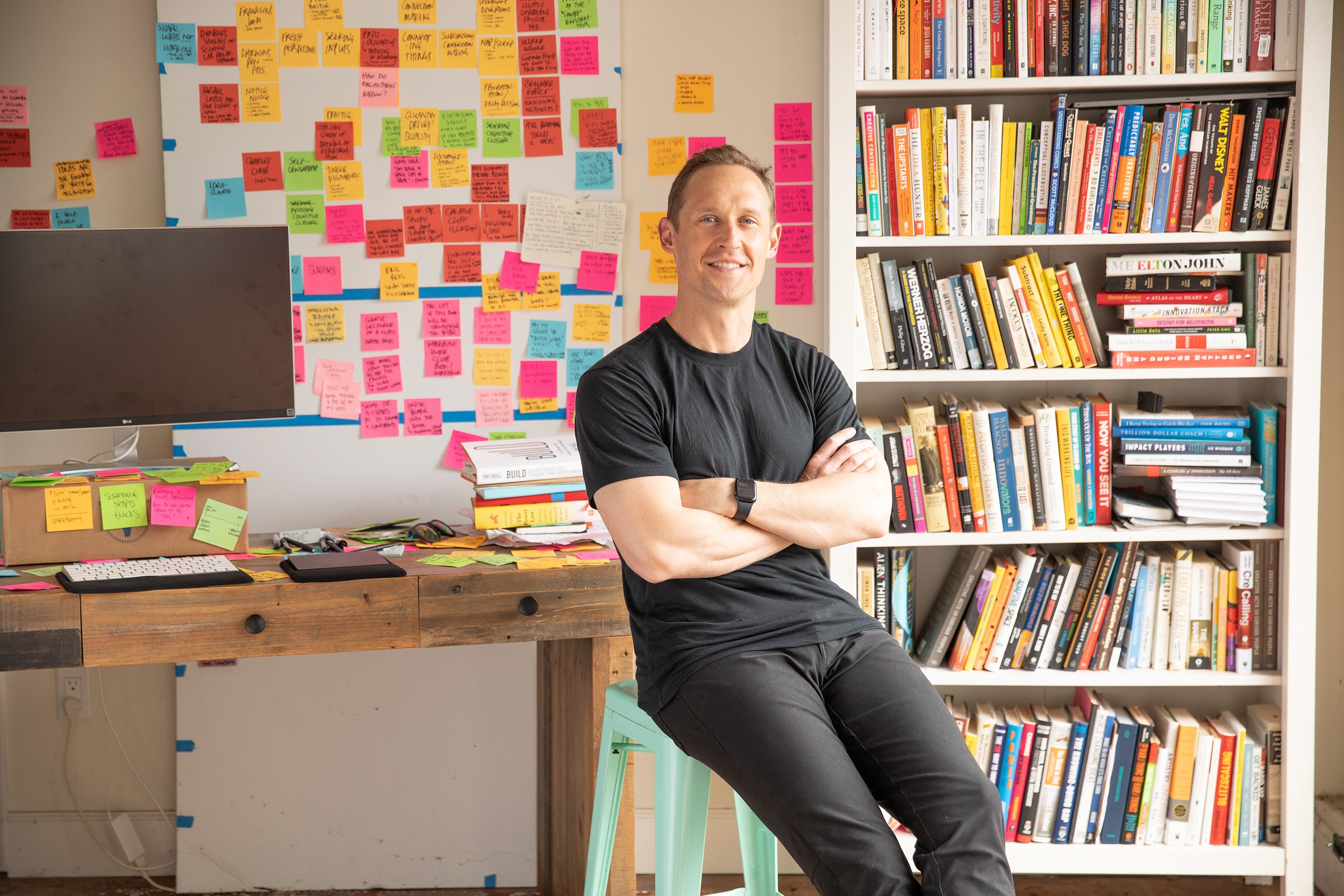
Methods of the Masters
A blog on the art & science of creative action.
Beware the Siren Call of the Wrong Question
The first question an innovator must answer is not “can I make it?” but rather, “should I?” This has become something of a mantra among CEOs I work with, as a needful protection against the gravitational pull of the organizational bureaucracy.
Reflect on Experiments
Steve Martin’s reflection routine as a fledgling magician gives a masterclass in learning through experimentation: if you don’t reflect, you can’t connect the dots in unexpected ways.
Answer the Right Question First
Many individual innovators, and the vast majority of organizations, expend far too many resources answering the illusive question, “Can it even be done?” Instead, they should invest a fraction of the effort to answer a simpler, more important question first.
Make An Extra Revision
Don’t just generate new ideas. Iterate your old ones, too. According to legendary creators James Clear and Mr. Beast, iteration is sometimes even more important than a new idea.
Create Desirability Data
Most organizations’ first question of a new idea is its technical specifications: can we even build it? The most important question is not technical, but human. A better question is, “Should we build it?…”
Watch Consumers Decide
Trying to figure out whether you have a good idea? Don’t ask people what they think! There’s a much better way to assess a new concept than asking for feedback.
Kill A Pain
I’ve helped nearly a million fledgling innovators come up with new ideas and assess which are worth pursuing. I have yet to see a student make this one mistake…
Open A Lemonade Stand
Innovation veteran Johannes Mutzke shares the best way to answer the perennial “build or buy” decision facing organizations seeking to enter new markets.
Make It To Make It Better
Philippe Barreaud, Head of Michelin’s Customer Labs, has a hard-won portfolio of insights from leading global innovation for 20+ years. Here, he revels in the paradoxes of prototyping as a toolkit.
Make Experiments Cheaper
One of the prime directives of an innovation leader is to make experiments cheaper to run. Sometimes this has to do with technology; but often, it has to do with the institutional norms driving would-be-innovators’ assumptions and expectations.
Be Skeptical
Design is an optimistic pursuit. But can lead to naïveté, if left unchecked. What most designers need is a healthy dose of skepticism to compliment the optimism with which they approach their efforts.
Request Options
Legendary Stanford professor Bob McKim had a simple, standard response to any student seeking his feedback on a new project: “Show Me Three.”
Make It To Make It Better
Philippe Barreaud, Head of Michelin’s Customer Labs, has a hard-won portfolio of insights from leading global innovation for 20+ years. Here, he revels in the paradoxes of prototyping as a toolkit.
Create A Portfolio
We tell our students at Stanford to create portfolios of early stage directions for a simple reason: it increases the likelihood of success. Research shows that we’re unlikely to select our highest-potential idea.
Test The Marshmallow
The thing that shocks most people is that MBA’s, who’ve likely visited the Eiffel Tower, and have a fair grasp on concepts like gravity — would be so categorically outperformed by children. Having run the activity scores of times, the simple way I’d describe the difference in mindset is, “Kindergartners know they don’t know the answer; MBA’s assume they do.” That simple mindset difference has profound implications for how teams approach the challenge…
Tom Sawyering (Floating Ideas)
This memory of Steve Jobs reminded me of a tactic that was known as “Tom Sawyering” around the Xerox PARC offices. An informal process of socializing ideas to build momentum…
Why the Shoe Fit Mark Parker
Mark Parker, former CEO and now Executive Chairman of Nike, is in the pantheon of Steve Jobs when it comes to design-forward innovation. He's one of the few designers to drive innovation at the level that he did from the chief spot…
Nike's Secret Weapon
Phil Knight's "Shoe Dog" has to be one of the best memoirs on entrepreneurship on the market. It's filled with reasons not to do something as crazy as start a company. But lest I digress, I wanted to mention what I consider to be Nike's secret weapon: Bill Bowerman's insatiable desire for victory on the track, and in particular, his willingness to experiment wildly to achieve it. He may be the quintessential example of "ideaction" embodied in a single individual. As Oregon's track coach, he had access to a "laboratory" of sorts: his athletes and their performance. But the thing that distinguishes him in my mind is the relentlessness and precision with which he experimented on his team's footwear in search of an edge…
Don't Build The Product; BE The Product
Do you know why WD-40 is called WD-40? Beyond being a warning against putting engineers in charge of branding, the product's name is actually an important lesson for innovation... more on that in a moment.
I just got done hosting the first LaunchPad office hours of the new year. We are interviewing applicants to determine their fit for the program. Each spring quarter, Perry Klebahn and I take 10-15 new teams into the program with the intent to launch real businesses in”…



















